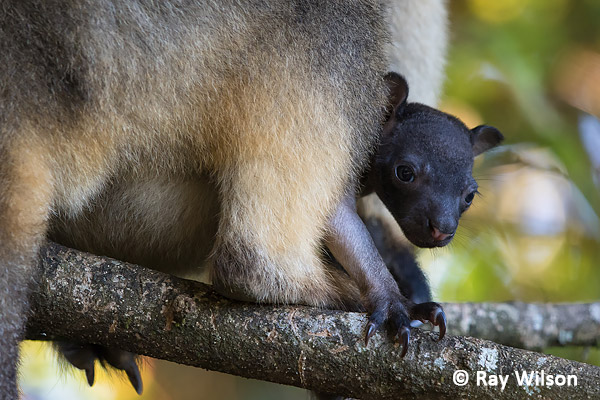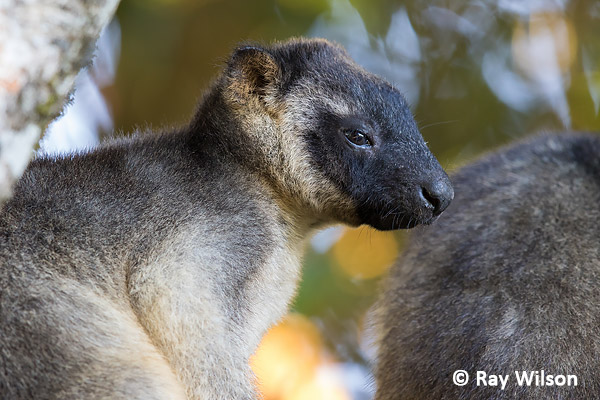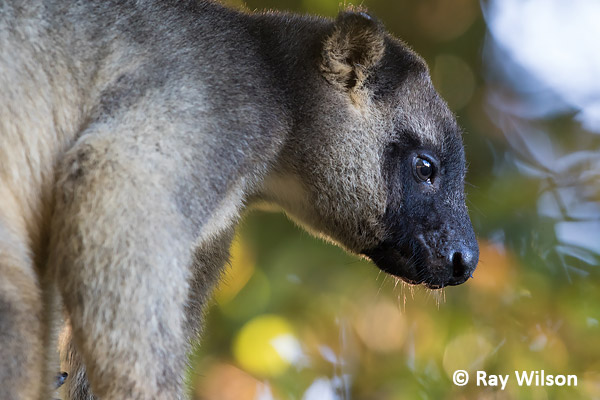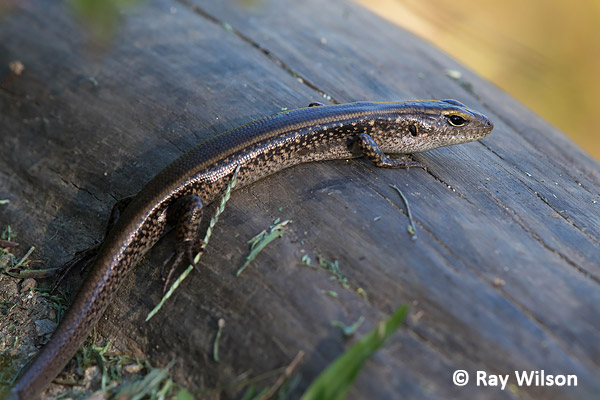
- Home
- Photography Tours
- Diary / Blog
- Galleries
- Foreign Trips
- Tasmania 2016
- NE Queensland 2016
- Western Alps 2016
- NE Spain 2016
- Australia's Wet Tropics 2015
- Australia's Top End 2015
- SW Australia 2015
- Switzerland 2015
- Andalucia 2015
- Belize 2015
- Australia 2014
- Switzerland 2014
- Belize 2014
- Bahama Islands 2014
- Switzerland 2013
- Ecuador 2012-2013
- Florida 2011-2012
- Vancouver Island 2011
- Australia 2010
- Peru 2008
- Bulgaria 2007
- Lesvos 2006
- California 2006
- New Zealand 2005
- Extremadura 2005
- Goa, India 2004
- The Gambia 2003
- About
October 2016
Atherton Tablelands, QLD, Australia
Part 10
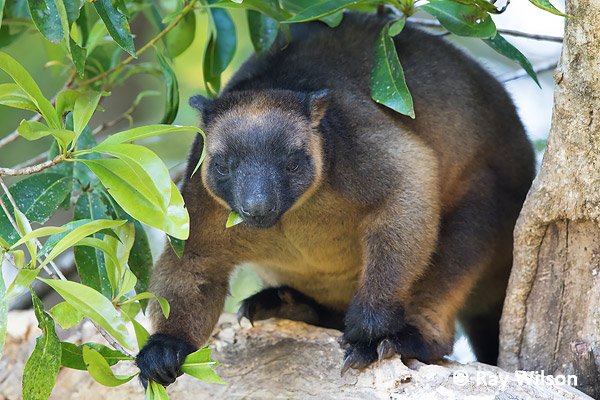
male Lumholtz's Tree Kangaroo (Dendrolagus lumholtzi)
Tree Kangaroos have evolved a number of adaptations to their arboreal lifestyle that differentiate them from other members of the kangaroo and wallaby family. These include longer, powerful arms that are almost as long as the hindlimbs and enable them to firmly grasp tree trunks and use their arms to support their entire weight as they climb up a vertical trunk.
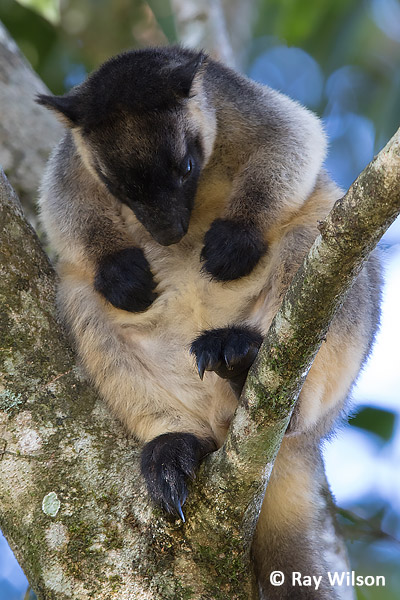
|
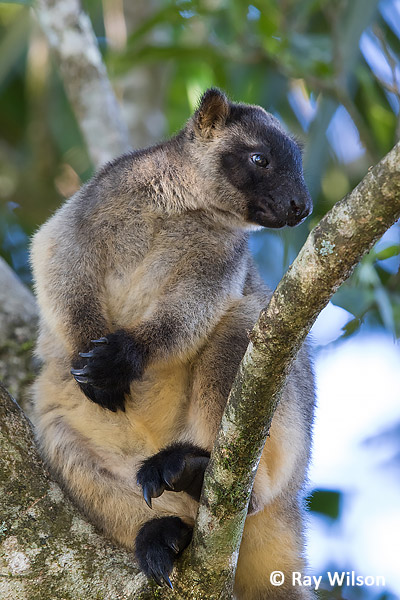
|
young Lumholtz's Tree Kangaroo (Dendrolagus lumholtzi)
They are unique among kangaroos and wallabies in being able to move their hindlegs independently of each other, an essential skill when moving through the complex environment of the tree canopy.
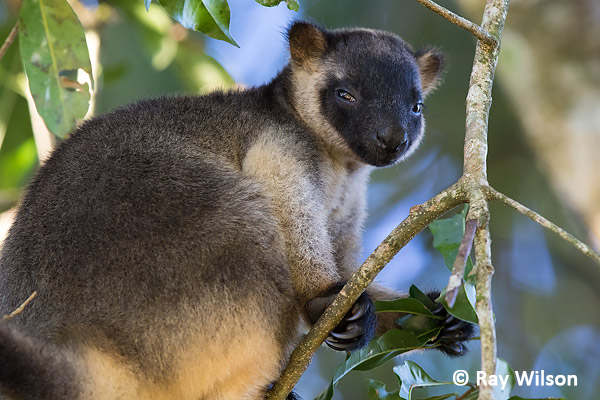
young Lumholtz's Tree Kangaroo (Dendrolagus lumholtzi)
Their diet consists almost entirely of mature leaves and this poor quality diet probably contributes to their cathemeral habits (i.e. active sporadically at irregular intervals throughout the day and night). Their general pattern of activity consists of 2-30 minutes of feeding followed by a rest period which may aid the digestion of the tough leaves.
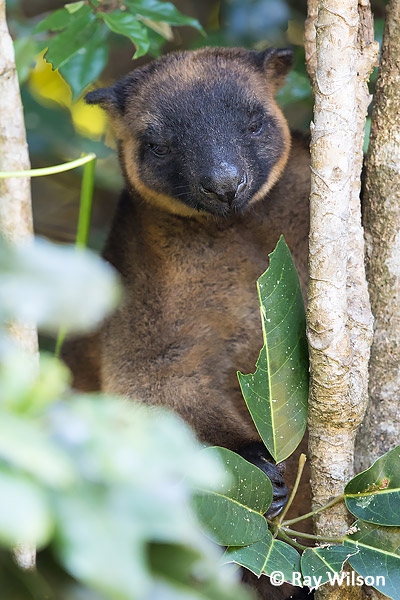 |
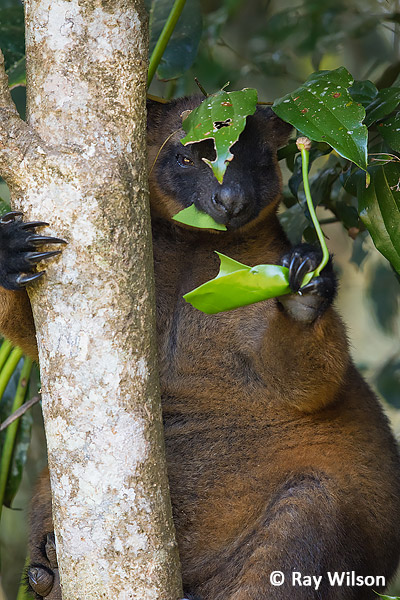 |
male Lumholtz's Tree Kangaroo (Dendrolagus lumholtzi)
Lumholtz's Tree Kangaroos have the longest gestation period of any marsupial, although the young are born at more or less the same stage of development as species whose gestation is 30% shorter.
mother & joey Lumholtz's Tree Kangaroos (Dendrolagus lumholtzi)
The length of parental care is also the longest of any marsupial. Once born, the joey will stay in the mother's pouch for up to 350 days, almost a whole year, although in captivity they tend to leave the pouch after only 8-9 months. It will then stay with the mother until it is 2-3 years old.
young Lumholtz's Tree Kangaroo (Dendrolagus lumholtzi) sitting beside its mother
Lumholtz's Tree Kangaroo (Dendrolagus lumholtzi)
The males are larger and more muscular than the females and tend to have a more chocolatey-brown colouration to their fur.
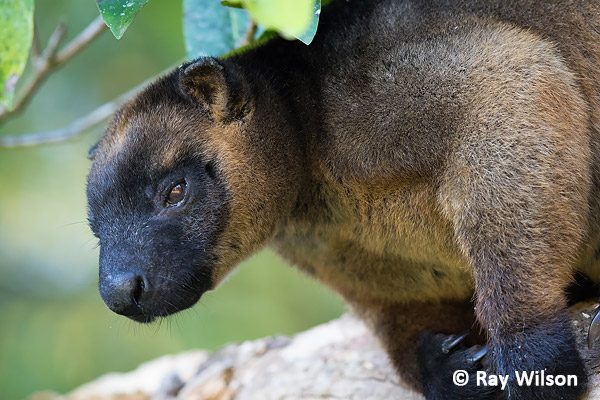
male Lumholtz's Tree Kangaroo (Dendrolagus lumholtzi)
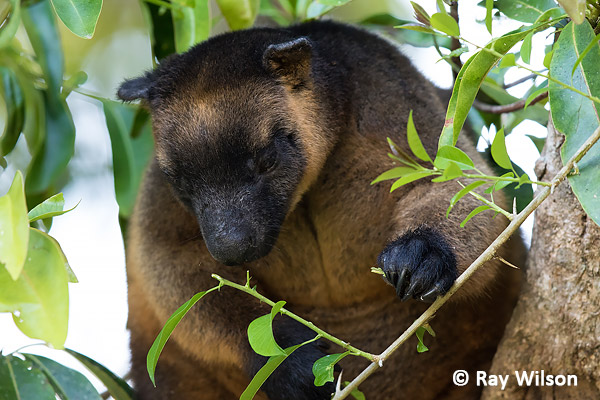
male Lumholtz's Tree Kangaroo (Dendrolagus lumholtzi)
The Musky Rat Kangaroo is the smallest of the macropods and is only about the size of a guinea pig. Unlike most other members of the suborder, Musky Rat Kangaroos have a quadrapedal bounding gait and is strictly diurnal in its activity patterns. It is also the only macropod that has 5 fingers. They are a common endemic in the rainforests of the Wet Tropics of northeastern Queensland and can often be glimpsed scurrying around on the forest floor as they search for fallen seeds and nuts among the leaf litter. They are, however, generally quite shy and usually dart away at the slightest sound.

Musky Rat Kangaroo (Hypsiprymnodon moschatus)
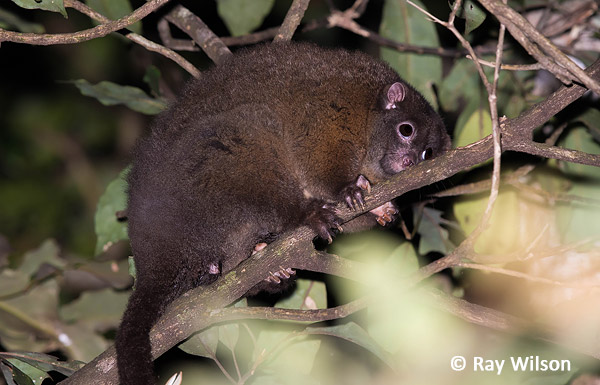
Lemuroid Ringtail Possum (Hemibelideus lemuroides)
Another two range-restricted endemic marsupials are Lemuroid and Green Ringtail Possums. These can often be found when spotlighting at night in the rainforests.
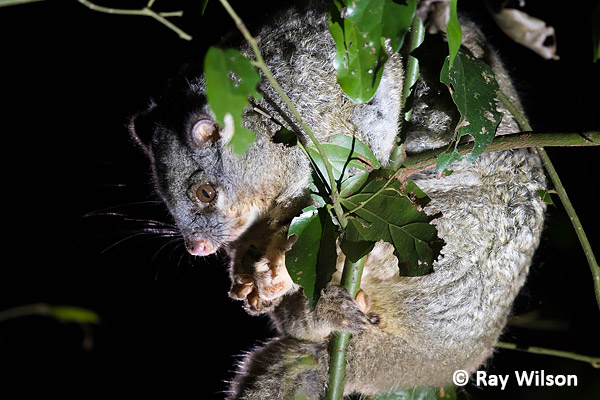
Green Ringtail Possum (Pseudochirops archeri)
Although I didn't notice it at the time, this Green Ringtail Possum was quite sick and its right eye (not visible in these photos) was weeping pus. About a week after these photos were taken, it was found on the ground at the base of its usual tree in a feverish and emaciated state and was taken into care. Unfortunately I don't know whether it recovered or not, but its prospects didn't look good judging by the state it was in when the ranger collected it.
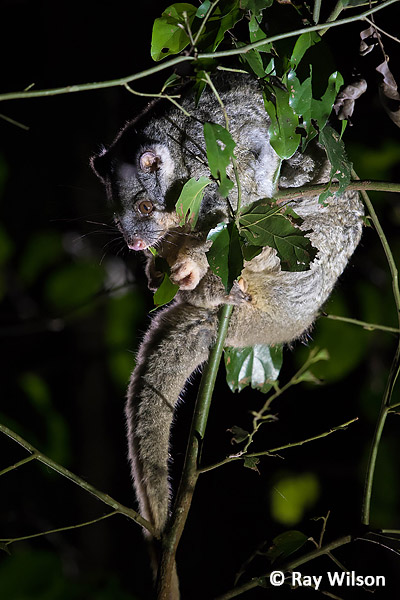
Green Ringtail Possum (Pseudochirops archeri)
Most lizards have a detachable tail which allows the lizard to escape with its life when attacked. The Leaf-tailed Gecko takes this survival mechanism one step further by having a tail that bears a remarkable resemblance to the head, causing confusion in the predator and increasing the chance that predator will attack the tail rather than the head.
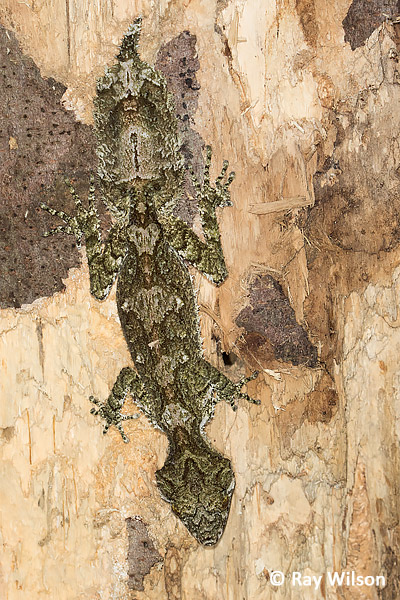
|
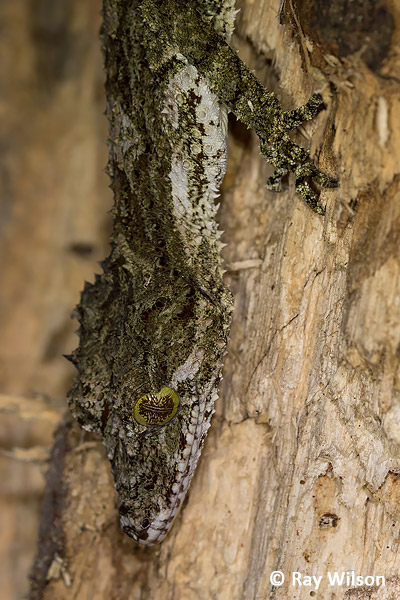
|
Northern Leaf-tailed Gecko (Saltuarius cornutus)
Eastern Water Skink (Eulamprus quoyii)
Ray Wilson owns the copyright of all images on this site.
They may not be used or copied in any form without prior written permission.
raywilsonphotography@googlemail.com
